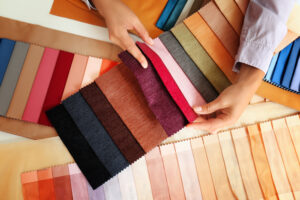Welcome to what promises to be an eye-opening exploration of one of the most underrated yet ubiquitous products in our daily lives – cellophane bags. Far from just being another piece of trivia, this journey will unveil the unexpected charm and indispensability of these transparent wonders in a way never seen before.
History Unwrapped
Believe it or not, the journey of cellophane bags dates back to the early 20th century, originating as a derivative of plant cellulose. Initially developed as a waterproof coating for fabrics, the material quickly transitioned into a revolutionary packaging option by the 1930s. This innovation offered a glimpse into the product without compromising on protection, a feature that was unheard of at that time. Imagine living in an era when seeing your purchase before unwrapping it was considered luxury!
Nature and Composition
What exactly are these bags made of? The term “cellophane” might sound synthetic, but you would be surprised to learn it is derived from natural sources. Primarily made from cellulose, which is obtained from wood and cotton, cellophane bags boast biodegradable properties contrary to common belief. This makes them an environmentally friendlier alternative to their plastic brethren, blending sustainability with functionality.
Manufacturing Mystique
The manufacturing process of cellophane involves dissolving plant pulp in alkali and carbon disulfide to create viscose. This viscose is then reconverted into cellulose through a complex regenerative process, forming a clear, strong film. The intricacies involved in manufacturing cellophane highlight the delicate balance between industrial production and ecological responsibility.
Biodegradability Breakdown
One of the most compelling attributes of cellophane bags max is their ability to break down naturally over time. Unlike many synthetic materials that loiter in landfills for centuries, cellophane returns to nature within three to six months under appropriate conditions. This characteristic underscores the importance of choosing materials that align with sustainable living practices.
Uses Galore
You might be wondering where you encounter these bags in your daily life. From wrapping your favorite bouquet at the florist to preserving the freshness of bakery items and even packaging gourmet chocolates, cellophane bags are everywhere! Their versatility extends beyond food packaging; they are also used in pharmaceuticals, cosmetics, and even as protective book covers.
Printing Possibilities
The surface of cellophane offers an excellent canvas for printing. This allows businesses to brand their packaging without compromising on showcasing their product. Whether it is vibrant colors or intricate designs, cellophane can carry it all, making your package as appealing visually as what is inside it.
Sustainable Solutions
In an era where sustainability is not just desired but demanded by consumers, cellophane bags present a compelling option. By opting for biodegradable and compostable packaging solutions like cellophane, businesses can significantly reduce their environmental footprint while still providing high-quality packaging options.
Creative Crafts
Not just for commercial use, cellophane has found its way into the hearts of crafters worldwide. Its malleability and transparency make it perfect for creating stained glass art projects, festive decorations, and elaborate gift wraps that add a special touch while remaining eco-conscious.
Versatility Verified
The range of applications for cellophane extends far beyond what meets the eye. From industrial uses in adhesive tapes and batteries to novel utilizations in agriculture as biodegradable mulch films, its versatility is truly unmatched. It serves as a reminder that sometimes the simplest inventions can have the most extensive impacts.
Preservation Power
A critical aspect that often goes unnoticed is its ability to preserve freshness while allowing products to breathe. This permeability helps prevent condensation and mold formation on perishable goods – a key factor in extending shelf life without resorting to synthetic preservatives.
Economic Efficiency
Besides being environmentally friendly and versatile, cellophane also scores points for being cost-effective. Its production process has been refined over decades allowing for economical large-scale manufacturing without sacrificing quality or performance.
Global Impact
The adoption of cellophane has had a significant global impact on both environmental conservation efforts and industrial practices around the world. It represents a step towards reconciling human needs with ecological preservation, marking progress in our quest for sustainable development.
Consumer Consciousness
As awareness about environmental issues gains momentum among consumers, there is a growing demand for transparent and responsible packaging options. Cellophane stands out as a model for how industries can adapt to meet these expectations without compromising on convenience or quality.
The Future Forward
The journey of cellophane from its humble beginnings to becoming an emblem of sustainability demonstrates its enduring appeal and adaptability. As research continues into improving its properties and reducing manufacturing costs further, one can only expect its usage and popularity to grow in various sectors.
A Lasting Legacy
The story of cellophanes transformative impact reaches far beyond just being another product on the shelf; it symbolizes progress towards an environmentally conscious future while reminding everyone about the power hidden in seemingly ordinary objects. So next time you come across a cellophane bag, take a moment to appreciate its subtle brilliance woven into the fabric of everyday life.










